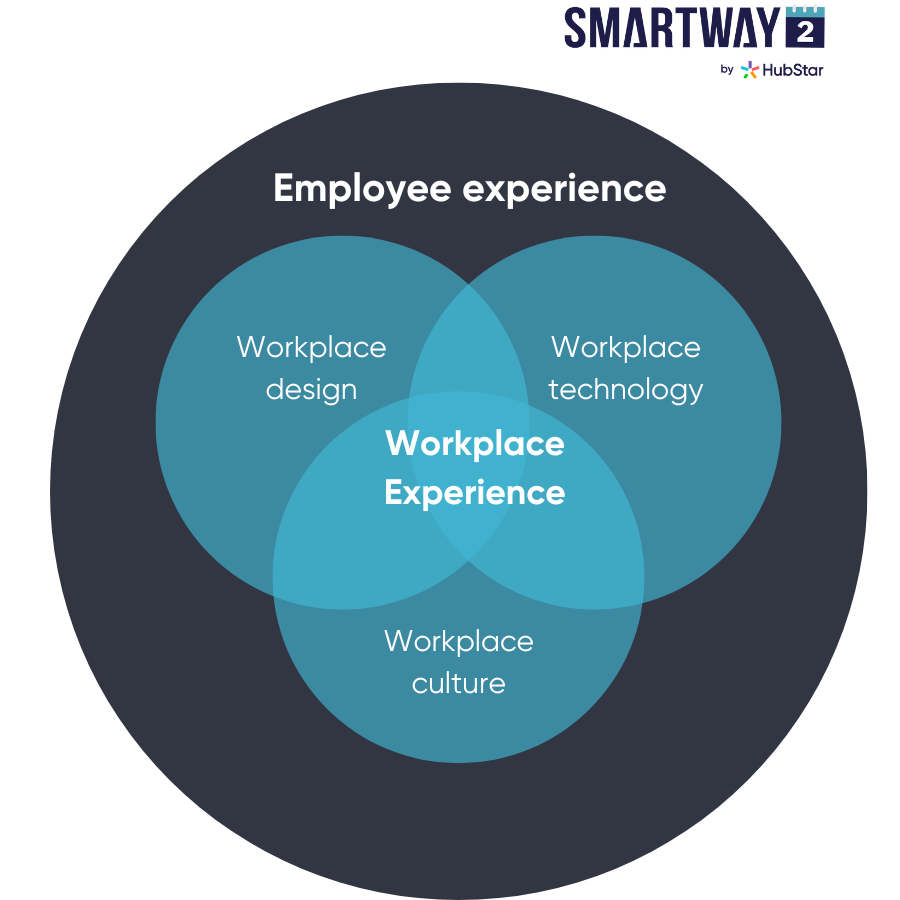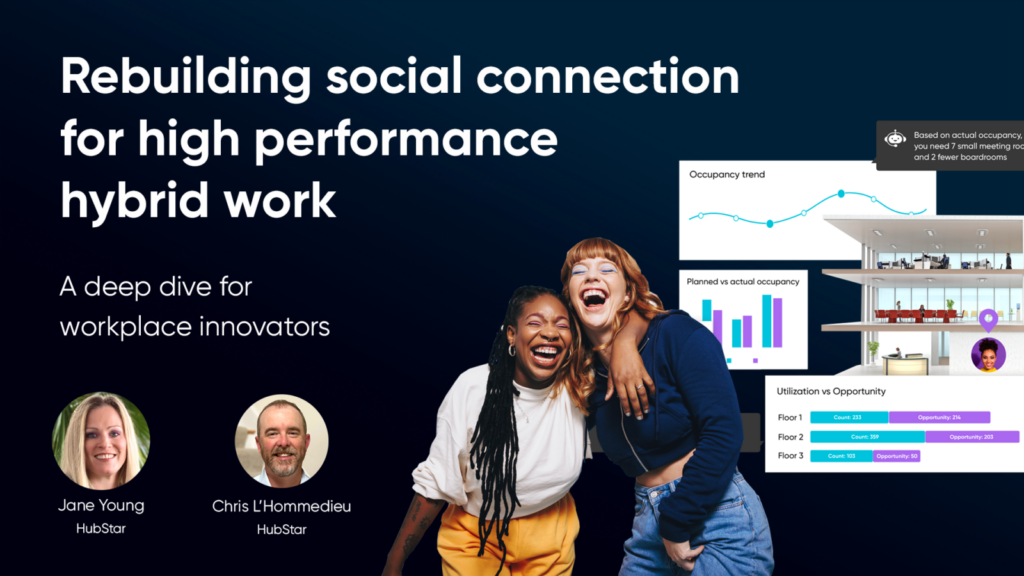
Employee Experience vs Workplace Experience: What’s the Difference?
Like most buzzwords, employee experience has had a trajectory from descriptive and much-needed to vague and applicable to anything and everything. And lately, workplace experience has become one of these things.
This might not seem like a massive oversight. After all, both of these terms refer to experiences people have.
But failing to differentiate between employee experience and workplace experience has harmful consequences for both employees and organizations.
So in this post, we’ll be taking a deeper dive into employee experience vs workplace experience: their definitions, their differences and why it’s important to address them separately.
What is employee experience?
Gartner defines employee experience as “the way in which employees internalize and interpret the interactions they have with their organization, as well as the context that underlies those interactions.”
Employee experience starts before people join a company and concludes when they leave.
Its core components are as varied as hiring, onboarding, relationships with managers, perceptions of leadership, compensation structures and exit interviews.
What is workplace experience?
Workplace experience is how employees internalize and interpret the interactions they have with their organization’s physical workplace, plus the context underlying those interactions.
Although it falls under the overarching category of employee experience, workplace experience has different and more specific core components.

Workplace experience starts when people plan a day in the office and ends after they leave. Its core components include:
- Workplace design
- Architecture
- Space planning
- Furniture
- Workplace technology
- Equipment like desk monitors and meeting room screens
- Communication apps like Slack and Teams
- Desk and meeting room booking systems like Smartway2
- Workplace culture
- Perks and amenities like coffee stations and yoga classes
- Social connection, both planned and spontaneous
- Psychological safety and openness
What’s the difference between employee experience and workplace experience?
Workplace experience is location-dependent, while employee experience is not.
| Employee Experience | Workplace Experience | |
| Definition | How employees internalize and interpret the interactions they have with their organization | How employees internalize and interpret the interactions they have with their organization’s physical workplace |
| Where and when it occurs | Anywhere the employee interacts with the organization, from the hiring process to the exit interview | In the physical workplace, from planning a visit to the office to leaving at the end of the day |
| Core components | Hiring Onboarding Perception of leadership Compensation structure Exit processes | Workplace design Workplace technology Workplace culture |
| Who’s responsible? | HR & People teams Employee experience teams Leadership IT | Corporate Real Estate teams HR & People teams Workplace Experience Managers Facilities Management Teams Leadership IT |
| Metrics to measure success | Employee net promoter scores (NPS) Retention & churn rates Employee review site scores (e.g. Glassdoor) Employee engagement scores Employee survey scores | Office occupancy rates Space utilization rates Employee workplace survey scores |
Why is it important to differentiate between employee experience and workplace experience?
Since employee experience encompasses workplace experience, only focusing on the former means ending up with a partial and incomplete perspective that will end up costing you profits, people and impact on the planet.
Think of it like this. Oat milk, soy milk and cow’s milk all fall within the overarching category of “milk”. But if you’re a barista using regular milk instead of oat milk, you run the risk of ruining someone’s morning.
Since workplace experience is location specific, fewer variables go into determining whether it’s good, bad or neutral versus what it takes to improve employee experience.
If you’re trying to improve workplace experience, it’s simpler to break the process down into individual projects and phases and set metrics to measure success, rather than waiting for overall employee experience to improve as a result.
The quality of your workplace experience determines whether employees want to come into the office or not. For many organizations struggling with return-to-office strategies, it’s increasing the number of people in the workplace that generates a return on corporate real estate spend. That’s why it’s so timely to focus on what contributes to a positive workplace experience now.
On the flipside, trying to improve employee experience by focusing excessively on the workplace doesn’t take into account the multitude of things that aren’t location-dependent at all (e.g. leadership transparency and diversity and inclusion policies), which is a recipe for out-of-touch leadership and bad retention.
How to improve your workplace experience
If you’re looking to build a better workplace, you’re not alone. Improving workplace experience is the number one priority for 67% of corporate real estate leaders.
Let’s break this down into the three categories that comprise workplace experience: workplace design, technology and culture.
Workplace design
Employees spend 42% of their week working with others and 35% working alone, according to Gensler’s 2023 Global Workplace Comparison Survey.
But default office design hasn’t changed much since the pandemic, with the majority of space dedicated to individual desks and a smaller portion for meeting rooms and collaborative areas. So the first step to workplace improvement is understanding the right ratio of individual to collaborative spaces based on current workplace habits and preferences.
There’s two ways to measure workplace habits and preferences – occupancy data and data from employee feedback, whether that’s from surveys, focus groups or interviews.

23 Questions to Ask in Your Next Employee Workplace Survey
Incorporating this data into the workplace design process, or data-driven office design, builds and iterates the office around what the ideal workplace experience looks like.
(Pro-tip: the ideal workplace experience is constantly changing and differs from person to person. That’s why data-driven office design is so critical to improving the workplace experience)
Workplace technology
Tech in the workplace serves two purposes:
- Empowering people to do their jobs better than they can while working remotely
- Making it easier to plan a great day in the office
Let’s break that down.
Imagine you need two large monitors plus your laptop to work effectively. You’ve perfected your setup at home, but it would be nice to go into the office once or twice a week to meet up with your team.
Ideally, your workplace should provide two monitors that are better than the ones you have at home.
And before you set your alarm and make the commute into the office, you’d like to have the certainty that the tech you need will be waiting for you when you get there, instead of non-existent or snatched up by someone else. That certainty could come from reserving the right desk through a desk booking system that lists desks by equipment and functionality.
So other than providing top-notch tech in the office – whether that’s desk monitors, AV equipment, employee workplace apps or anything else – organizations can also improve their workplace experience by using tech to help employees plan their visits to the office.
A different work environment from the one you expected is a huge source of commute regret for employees. Expecting a poor workplace experience is a recipe for a stalling return to office.
Workplace culture
Job site Indeed defines workplace culture as “the environment you create for your employees and the sum of your organisations’ traditions, interactions, attitudes, values and behaviours.”
A simpler definition is the vibe or buzz people get when they come into the office.
If you’re thinking that this sounds like a difficult thing to improve, you’re not wrong. And that’s because culture is impacted by so many things – how an organization handles conflict, how transparent the leadership team is and even who decides to come into the office on which days.
But as nebulous as workplace culture is and as difficult it can be to improve, organizations can create the right conditions for culture improvement in the office – but can never force it.
Here’s how.
- Give teams and individuals autonomy over when and how they experience the workplace. This ensures people’s interaction and behaviors are genuine instead of forced, which builds a lasting culture
- Prioritize social connection through workplace design. Office layouts, furniture and types and sizes of available meeting rooms all give spontaneous and planned interactions more spaces to occur
- Provide the right office perks and amenities. Things like yoga classes and espresso stations give people chances to experience what psychiatrist Edward Hallowell calls “human moments” – connections that can only happen in person
What does it take to rebuild social connection in the office and improve workplace culture? Check out this on-demand webinar for a deep dive!



